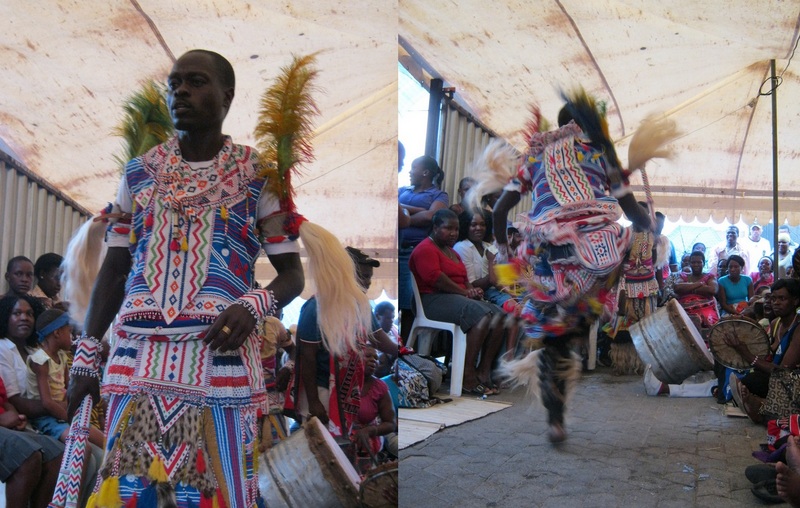A study led by Dr. Jason Bantjes of Stellenbosch University explores South African traditional healers’ work with suicidal individuals. The results of the study, published in a recent issue of Transcultural Psychiatry, suggest that South African traditional healers frequently work with suicidal individuals, and thus have an important perspective to contribute to the country’s suicide prevention-related public health efforts. The researchers found that healers support suicidal individuals by helping them strengthen social bonds, renew connections with family and ancestors, and reaffirm their cultural heritage through the use of rituals.
“Practitioners of traditional African medicine (traditional healers) are an important part of the health care system in South Africa, yet their voices are often absent from discussions about public health,” Bantjes and his team write.

Bantjes and his co-authors explain that their study is informed by the ‘cultural turn’ in critical suicidology. This approach, which focuses on questions of context and culture in suicide research and prevention, is intended to challenge psychiatry and biomedicine’s assumption that suicidal behavior is a sign of “mental illness.” The authors state that such a perspective is crucial given the “limited effectiveness” of biomedically-oriented suicide prevention efforts, as well as their unavailability in many parts of the world. However, they also caution against engaging in a dualistic way of thinking (biomedicine vs. culture), which they aim to avoid in their work:
“The challenge is to find ways to think about the limitations of biomedicine and psychiatric approaches to suicide prevention without having to reduce Western medicine to a caricature while idealizing indigenous cultural approaches.”
The authors suggest that suicide-related research and public health efforts must include a broader range of individuals working in the area of suicide prevention, including those who do not necessarily fit within the biomedical model’s borders. In this spirit, they sought to explore South African traditional healers’ work with suicidal clients – to record healers’ suicide prevention work, as well as to learn about their conceptualizations of suicidal behavior and interventions with suicidal clients.
South Africa is home to about 200,000 traditional healers and 25,000 medical doctors; it is thought that 60% of South Africans seek the services of healers. The authors note that although healers offer treatment for a number of physical and mental health conditions, their perspectives are typically not included in the country’s conversations about public health, nor has their health care knowledge been extensively documented. Bantjes and his team hoped to begin close this gap within the realm of mental health and suicide prevention.
The researchers performed interviews with six individuals who practice one or more of three forms of traditional healing – traditional medicine (inyanga), divination (isangoma), and faith healing (umprofiti). Interview transcripts were analyzed using thematic content analysis.
Interviewees shared that they work with suicidal clients on a regular – daily to weekly – basis. They expressed confidence in their ability to assist suicidal individuals and asserted that suicidality is not something that Western medicine alone can address. Below are some of the circumstances the healers identified as contributing to their clients’ suicidal ideation and behavior:
Disconnection from identity, culture, and social relationships.
Participants discussed urbanization’s role in Black South Africans’ loss of connection to cultural traditions and weakening of family bonds. One participant explained that with Westernization, Black South Africans have taken on others’ customs and are now living “a borrowed life.” Another participant explained that difficulties could begin at birth if traditional birth practices are not observed and if children are born in hospitals rather than at home with midwives, who can help them understand where they come from. Birth traditions foster strong ties to one’s ancestors and family and offer the protection of connectedness to one’s origins. The same interviewee remarked that “if the person does not have strong roots, this can be a problem.”
Severance from ancestors.
Interviewees discussed ancestors’ spiritual significance and role in safeguarding individuals’ well-being. They maintained that those who do not acknowledge their ancestors and honor them through rituals will not be granted their protection against sickness and other hardship. As such, rituals performed to appease and reconnect with ancestors represented one intervention healers described offering to suicidal clients. These rituals also serve the purpose of strengthening familial and social relationships, as they typically involve going home and enlisting family members’ participation.
“Emotional sickness.”
The healers also cited emotional distress due to challenging life circumstances as a factor in their clients’ suicidal thinking and behavior. Traumatic experiences and feelings of shame, guilt, or regret (having an “unclean heart”) for one’s actions were also mentioned as possible causes of suicidality.
Interviewees described a variety of practices used to “bring [suicidal clients] back into life,” emphasizing the importance of adapting treatments to meet a given client’s situation and needs. Common practices included “sitting and listening,” offering spiritual guidance, and traditional ceremonies and medicine (e.g., herbs, spells). Participants stressed the importance of taking time to listen closely to suicidal clients and trying to “understand their needs.” One participant said that he “can easily sit [with a client] for 2 hours and try to trace the problem back to the beginning”; another underscored that what differentiates healers from Western medical doctors is the counseling healers provide.
In their discussion, the authors point out the overlap between participants’ descriptions of suicidality’s causes and traditional treatments and those of “Western scientific accounts.” For example, interviewees described social isolation, which has been linked to suicide risk in Western scientific literature, as being one of the possible causes of suicidal thinking and behavior. Some participants also described the influence of “bad genes” in creating voices that instruct clients to commit suicide, a narrative that echoes Western psychiatry’s biogenetic constructions of mental illness and reports on “psychosis” and suicide risk.
Although the authors do not offer a definitive explanation for this overlap, they do suggest that healers’ views have likely been influenced by the forces of globalization and urbanization. They also acknowledge that in an environment where biomedicinal approaches rule, traditional healers may be motivated to highlight the metaphysical/spiritual elements that differentiate their work.
Interestingly given the healers’ view of their clients’ disconnection from cultural traditions as a key cause of suicidality, the authors close by arguing that participants’ descriptions of clients’ culturally “mix-match” lives may suggest “an openness to considering a range of approaches to dealing with suicide.” They do not detail what this range of approaches might include.
The authors end by calling for “nuanced accounts of culture, which are neither reductionist or deterministic, and which make space for contradiction and nondualism, in suicide research and prevention.”
****
Bantjes, J., Swartz, L., & Cembi, S. (2017). “Our lifestyle is a mix-match”: Traditional healers talk about suicide and suicide prevention in South Africa. Transcultural Psychiatry, 1363461517722065. (Link)















“…without having to reduce Western medicine to a caricature…”
With “disorders” like “Intermittent Explosive Disorder” and “Oppositional-Defiant Disorder” and “Disorder of Written Expression,” Western medicine appears to be reducing itself to a caricature without the help of any outside forces.
Report comment
so what I’m hearing is…the healers beat the witch doctors?
Report comment
I began psychiatric residency in 1957 and found that by talking to patients and understanding their lives it seemed easy to understand where their symptoms originated. Since we’d done this together the patients were better able to understand their lives, and the symptoms moderated and disappeared.
Psychiatry wanted to keep up with the wonderful achievements of physical medicine and preferred to think of these disorders as biological and genetic in origin, and quickly turned to the plethora of new drugs that they hoped would keep them in the business of being in command of what are primarily psychological and spiritual disorders, as you describe the healers dealing with.
I had a young African man, a student, who was tormented by persecutory voices. I was fascinated to hear him come to an understanding of who was sending these hateful messages, and he recovered in 2 months!
Later on, in my psychoanalytic training, I accidentally got a patient who suddenly became psychotic with an impenetrable thought disorder. The patient and I both felt doomed, but by great good fortune my supervisor was Dr Donald Winnicot, who suggested I stop talking, and listen.
Eventually I understood something and with 4 years of therapy the patient thanked me for helping him to feel human.
When psychiatry closed the units we were running on psychotherapeutic lines, I went into private practice in Ontario where I could get paid for seeing anyone, and discovered that psychotic patients were the most dedicated, demanding and rewarding that I had.
It certainly reinforced that many mental illnesses are spiritual, although psychosis can be caused by physical disorders.
I discovered that the most long term psychotic patients had had severe maternal deprivation from early life, and required feeding from a baby’s bottle as part of healing.
E.A.Childe. MD
Report comment